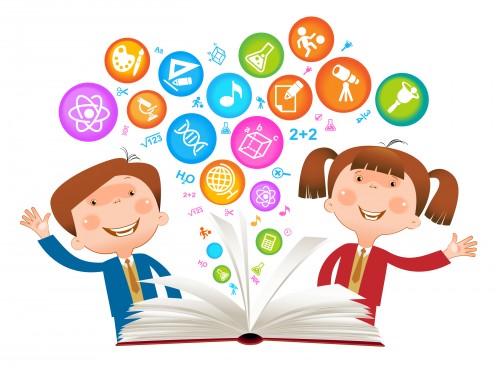By James Dacey

CERN is seeking to inspire tweens in science. (Courtesy: iStockphoto)
I must confess that I was not aware of this partnership, and I must admit it’s not a partnership I would have seen coming. CERN has teamed up with the organization behind the Eurovision Song Contest, in awarding grants to two multimedia companies to develop content that can spark the scientific curiosity of “tweens”.
Okay, let’s back up a second and define a few terms in this equation. Tweens are described by CERN as children aged 8 to 12; not quite teenagers but no longer big babies either. My teacher friends will shoot me down in flames for this cod-pedology but I guess this age group is old enough to be excited by science but not yet old enough to start truly engaging with scientific concepts.
As for the Eurovision Song Contest, those of you outside of the cultural Eurozone may not be au fait with this celebration of all things kitsch. Once a year, nations across Europe and beyond (Israel, for example, takes part) enter musical acts with naff songs and camp clothing to compete in a televised show for the Eurovision crown. If you can leave your highbrow sensibilities at the door, it can be a really good night in front of the telly.
Anyway, as I found out this week, the organization behind the competition is called EUROVISION and it is operated by the European Broadcasting Union (EBU). According to its webpage, EUROVISION is also involved in a wide array of other cultural activities, focusing on the production of entertainment and music along with news and live sport. In November 2012, CERN and EUROVISON launched an initiative calling for production companies to develop “multiplatform media” proposals to engage children in fundamental physics in an entertaining and creative way.
“Children are the most remarkable example of curiosity,” said Sergio Bertolucci, CERN Director of Research and Computing. “We should not limit this curiosity, but develop it.”
The news this week is that CERN and EUROVISION have selected the two production companies that will receive grants to develop their proposals. The first is an animation series called “Cubic, Quark & Big-G”, proposed by Baby Cow Animation & Bigfatstudio, where robot heroes will explore fundamental physics in a fun and formative way. The second is a series of short films called “Just for Quarks”, from production company Screen Glue, featuring three teenage pranksters who share a super power – the ability to alter fundamental laws of physics.
Both projects will be presented at the EUROVISION Science & Knowledge pitching session taking place in Berlin during the week of 9 September. Whether or not these films do inspire the next Peter Higgs remain to be seen. But if they can be half as entertaining as the Eurovision Song Contest, then, in my book, that is money well invested. Though please let the music be slightly better!
I would like to draw attention to a story on Scientific American, 29 November 2012, see link below.
http://www.scientificamerican.com/article.cfm?id=supersymmetry-fails-test-forcing-physics-seek-new-idea On the basis of foregoing story, I think it is necessary to seek new ideas in physics – see my comment on that story, dated 12 January 2013. Let me draw attention of readers to some facts and findings from Physics Education, which support my idea.
1) There is a Letter to the Editor of American J. of Physics, January 1984, by Prof. Anthony P. French, entitled: Did Newton forget his own laws of motion? This Letter has remained in my mind for 29 years and, on the basis of my own research in physics education, I feel that the title should been: Did Newton (really) forget his own laws of motion? According to that Letter, Newton wanted to reconsider some the views of Aristotle and there I feel that CERN and EUROVISION have to make joint efforts to some fundamental problems in physics, such physics is still unpopular among students and society, instead of focusing attention on mega-advanced physics.
2) Frank Wilczek, a leader of theoretical physics, now age 62. But he had maximum trouble in learning classical mechanics – about 40/45 years ago – see his article on F = ma in Physics Today / October 2004. His comment is appealing because, I think this is one of the reasons why physics community had to celebrate IYP-2005 for popularizing physics. I this this area is still open and has some real formidable challenges – requiring focus on Physics Education with top priority.